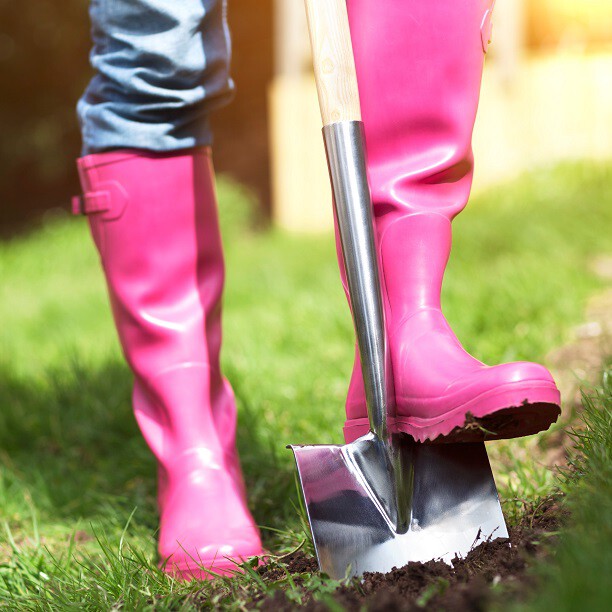It takes just one weekend, and the effort is entirely worth it.

Sod does great things for a lawn that's seen better days. For starters, it replaces tired-looking, yellowed grass with a lawn that's thick, lush, and resistant to weeds and diseases. But you can't just lay down new sod on top of the old lawn-take the time to properly prepare the existing soil for a healthy new carpet of grass. First, figure out how much sod you need to order. Don't worry, it's surprisingly simple to determine using basic math. All you need to do is multiply the length of the area you want to sod times the width to get the total square footage to order.
Now it's time to get your lawn into shape. Here's everything you need to know about prepping your lawn for sodding.
Get existing soil analyzed.
A month before you plan on installing sod, get a sample of your soil analyzed for any nutrient deficiencies, says Kurt Morrell, the A.P. Farm Associate Vice President for Landscape Operations at the New York Botanical Garden; you can send the sample to at a soil testing laboratory, such as a university extension service. It will determine whether or not the soil is too acidic or has too much alkaline and needs certain nutrients to become a healthy base for the new sod.
Grade as needed adding soil as needed.
To get your lawn level, use a rake or shovel to break apart or flatten out any mounds or lumpy spots. Fill in any holes or dips with soil so everything is even.
Apply any amendments per soil test.
If your soil was lacking any nutrients, now is the time to add them per the recommendations from the soil test. When done, rake or grade soil as needed.
Roll soil to lightly compact.
In rolling, you'll firm up the top one to two inches of soil. Go lightly and you'll create an excellent surface for installing the sod.
Rake soil to loosen to a half inch.
Break up any remaining clumps. This is an important step in a sod application that looks uniform.
Lay sod in a brick lay pattern.
You'll want to lay the sod down in the same way you'd lay bricks-it shouldn't stack up evenly. Do your best not to step on the sod as you lay it down. If you do, be sure to rake out any footprints. You should position sod bricks snugly against one another but don't overlap or leave spaces between strips of sod.
Water immediately.
It needs plenty of water to settle the soil and stay green and healthy. It's best to water in the morning-as the temperature rises towards the afternoon, much of the water will evaporate.